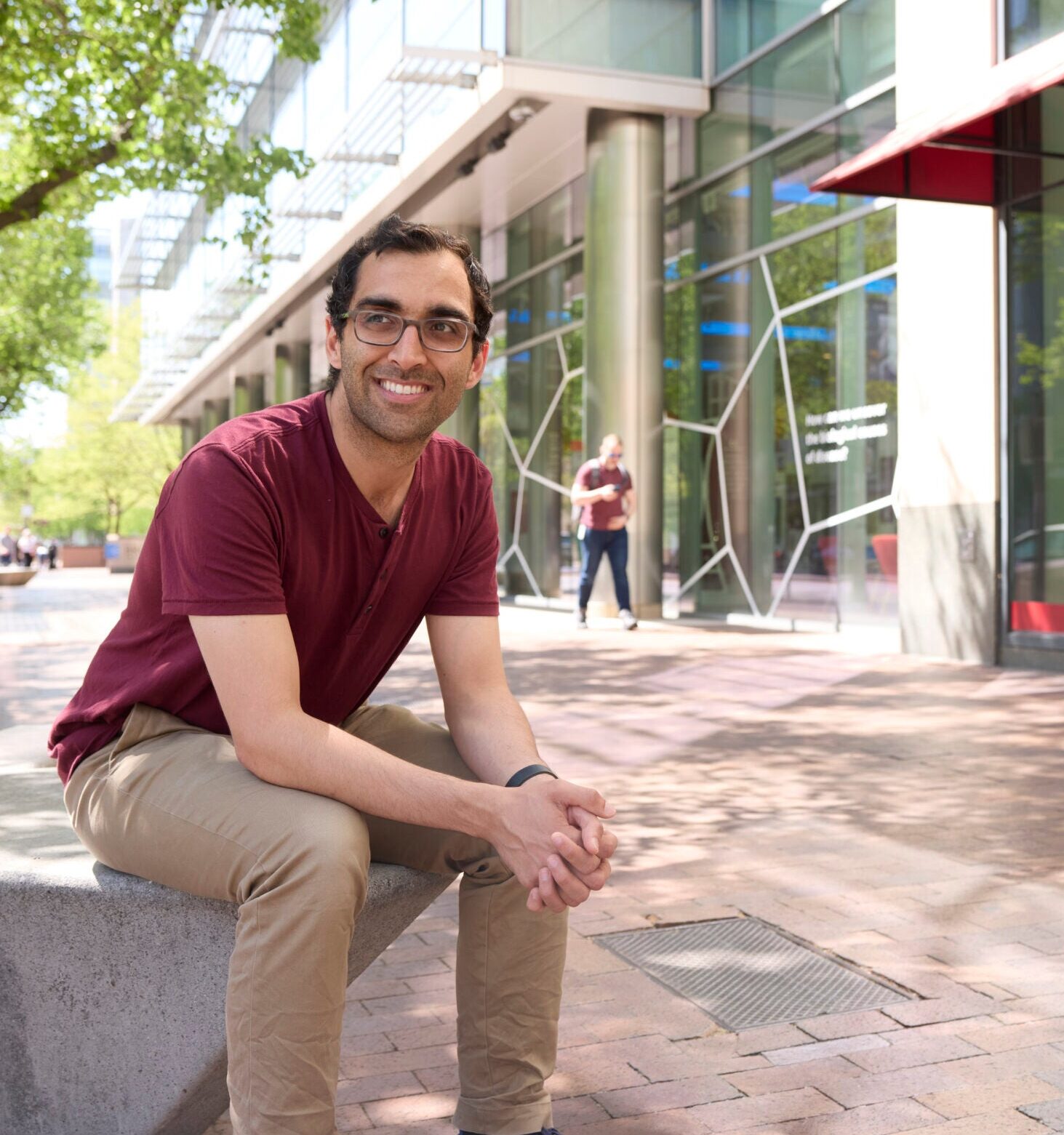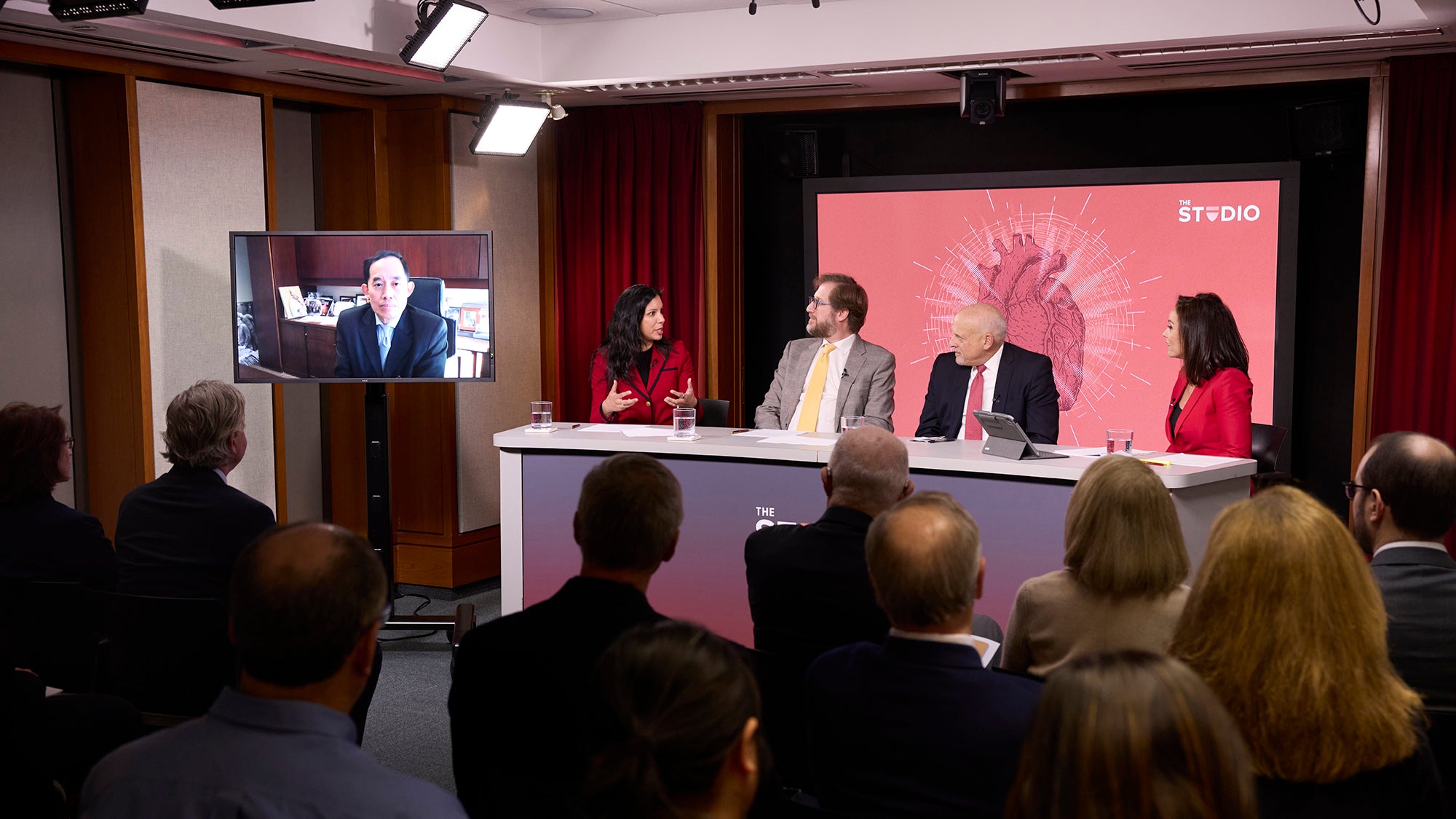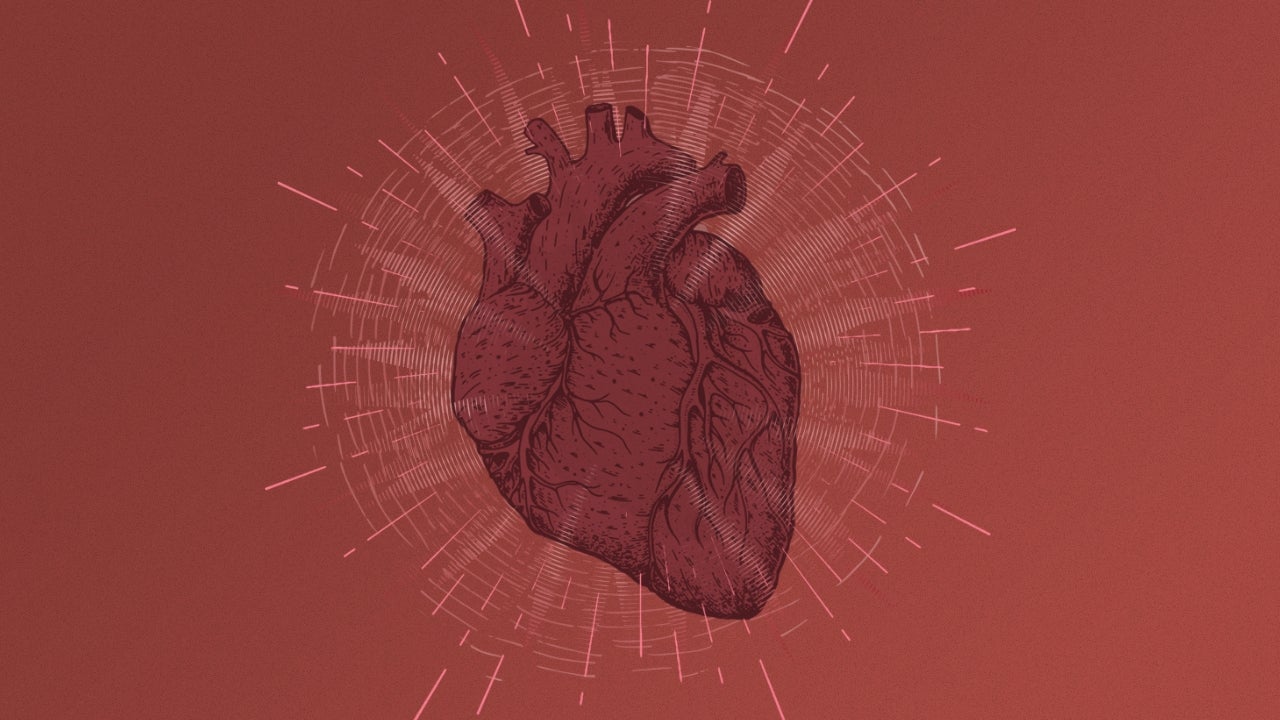Improving cardiac health through machine learning

May 15, 2024—Mostafa Al-Alusi, SM ’24, is a cardiologist with a passion for computer science. After graduating from Harvard T.H. Chan School of Public Health’s Health Data Science program, he will continue his research on using machine learning to improve heart health.
I’ve always been a science-minded person. Growing up I was interested in chemistry and physics, and in college I got deeper into biology coursework and found it very fascinating. At the same time, I started thinking about how I could use my knowledge and skills to do something with impact. I’m as excited about theoretical stuff as the next guy, but at the end of the day, I want what I’m learning to make people’s lives better. So, I decided to go into medicine.
Cardiology reminded me very much of physics. It’s also very practical, in that there are a lot of things you can do to make people feel better. You talk to a patient, look at lab tests, electrocardiograms (EKGs), and imaging, pull all that information together, and then can come back to the patient and say, “I know what’s wrong with you—and I have a treatment.”
Since childhood, I’ve been interested in computers and computer science. I don’t have any formal engineering background, but I taught myself a lot of programming and coding, and over time developed an interest in the intersection between technology and medicine. I remember when the internet and then smartphones started changing the world, and I think I had a sense that technology’s impact would soon reach medicine too.
I’m currently a cardiology fellow at Massachusetts General Hospital and a research post-doc the Broad Institute, and for the last several years I’ve been helping conduct research on how deep learning—a type of machine learning—can be used to examine large cardiac data sets to predict the risk of various cardiovascular diseases. In essence, we’re training computers to look at EKGs and imaging in the same way that cardiologists do. In many cases, a computer can look at cardiac imaging and waveforms and interpret them better than we can. Theoretically, a cardiologist could sit down and do all the math the computer is doing—but even for one EKG, for example, it would probably take years.
One project I’ve led is about the risk of hypertension, or high blood pressure, as it relates to risk of other cardiovascular diseases such as heart attack. We trained a deep learning model to evaluate patients’ risk of hypertension using many millions of EKGs from Mass General Brigham’s database dating back to the 1980s. We then looked at the health records attached to the EKGs to see which patients had a heart attack after having an EKG. We found that patients predicted by the model to be at high risk of hypertension did have more heart attacks and were able to calculate what a patient’s risk of heart attack was based on their risk of hypertension. I’ve also participated in similar research around atrial fibrillation, coronary artery disease, and heart failure.
Our group conducts this research by pairing clinical leads with experts in computer science. But in my opinion, if clinicians like me are going to have any meaningful impact on how deep learning is used to promote patients’ health, we need to genuinely understand not just the medical side of things, but also the computational side. That’s what inspired me to enroll in Harvard Chan’s Health Data Science program. I wanted to gain the knowledge, tools, and skills to better understand and improve my research.
One of the best aspects of the program was the core curriculum. One class that stuck out to me was a statistics survey course we had to take first semester. That was very foundational to me. I and so many clinicians who don’t have formal public health training use statistics all the time; it’s easy to use a computer to run a regression. But it’s one thing to plug numbers into a computer, and it’s another thing to really understand the math and where you can get yourself and your research into trouble. Taking that class allowed me to learn the theoretical basis of statistics so that I now better understand the strengths and limitations of other people’s research and, critically, my own.
My capstone project was developing a deep learning model trained to look at an echocardiogram—an ultrasound of the heart—and diagnose mitral valve prolapse. It was good to gain practice in doing modeling by myself in a supportive environment. Santiago Romero-Brufau and Tamar Sofer gave me great feedback.
The skills I was developing in real time during the program enabled me to train a deep learning model to automatically measure the size and function of the right side of the heart—critical data that aren’t often obtained because of how much time and effort is required of clinicians. It was exciting to walk away from class with new coding skills that allowed me to lead the part a research project normally overseen by someone with a more dedicated technical background.
After two years of study, I don’t expect to be at the level of some of my collaborators who have PhDs and have been working in deep learning for years. But I can communicate with them in their own language and really understand their work, and they don’t have to translate or simplify things for me as a clinician.
After graduation, I’ll be continuing my clinical training to further specialize in cardiac electrophysiology, which deals with cardiac arrhythmias. Looking even further ahead, I’m envisioning a career as a physician-scientist. I hope to one day start my own lab centered on cardiac health and deep learning.
Photo: Kent Dayton


